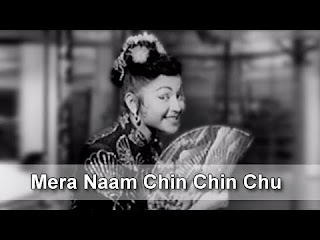Most of us remember Laxmi Chhaya with this iconic song from the 1971 film 'Mera Gaon Mera Desh'but she first came into limelight with a dance number from 1965 film 'Gumnam' with a guest appearance as the masked dancer in the song Jaan Pehechan Ho. Her dance performance was appreciated and gained a cult following internationally, receiving attention in both India and America, and has been deemed her signature performance.
Laxmi Chhaya (7 January 1948 – 9 May 2004) began acting with an uncredited appearance as one of the schoolgirls in Talaq (1958), for a few years she appeared in many Bollywood as a guest appearance, a few of these were Raat Aur Din.(1967), Baharon Ke Sapne,(1967) ,Upkar(1967) and Ram Aur Shyam, Naughty Boy(1962) as Bela, was her first role that wasn't a guest role.
In 1968, she starred in Duniya as Laxmi, a role named after her. In 1969, Chhaya next starred as Rita in the film Aya Sawan Jhoom Ke (1969), where she starred in a supporting role once again with Asha Parekh. The movie was a commercial success. In the same year, she also starred in the film Pyar Ka Mausam (1969). In 1971, Chhaya starred as Munnibai, a young girl who works undercover for a dacoit, in Mera Gaon Mera Desh, her first role as Munnibai was a part of the main cast.The film was a major and critical success at the time, and is considered to be one of Chhaya's best performances.Three songs were picturized on her, all of them were popular.
In 70s, she appeared in many films after the success of Mera Gaon Mera Desh, Raaste Kaa Patthar (1972), Do Chor (1972), Bindiya Aur Bandook (1973), Do Phool(1973) ,harafat Chod Di Maine (1976), and Haiwan(1977).are a few.
After a series of commercially unsuccessful films, in 1987, she retired the film industry after a guest appearance in the film Parakh. In the years prior to her death, Chhaya went on to open her own dance school, where she taught dancing to indigent children.
After retiring from cinema, Chhaya taught dancing to indigent children. She died of cancer in Mumbai on May 9, 2004 at the age of 56.
Here are 10 memorable dances performed by Laxmi Chhaya in films.















